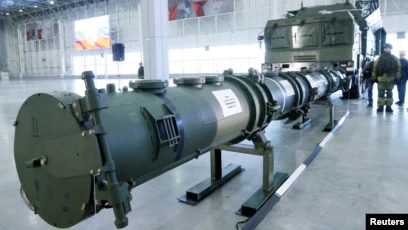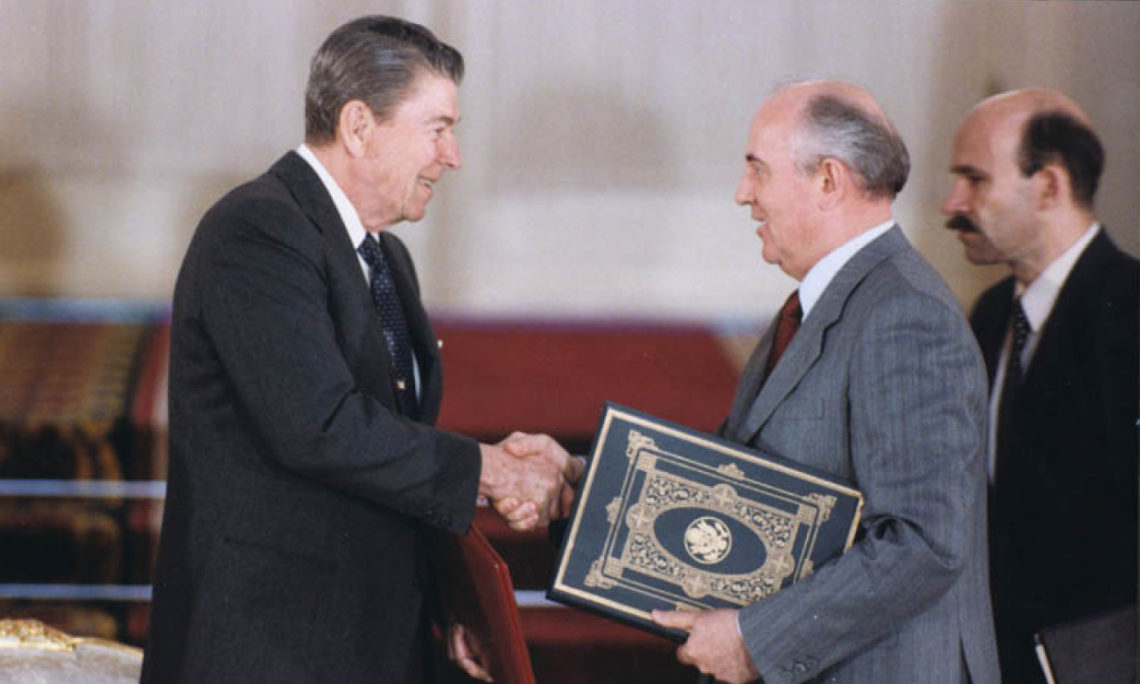
Russian SSC-8 land based missile.

Russian SSC-8 land based missile.
It was the first treaty to eliminate an entire category of weapons. President Reagan, when asked about the treaty, said, “The INF treaty, as proud as we are of it, should be viewed as the beginning, not the end.” Following the INF Treaty, many more nuclear arms control treaties were signed that continued the elimination of more nuclear weapons. Under the Trump administration, the United States pulled out of the INF treaty in 2019 to continue to test nuclear weapons, though Russia had been violating the treaty since 2008 when they tested an SSC-8 cruise missile.
The INF Treaty, (Intermediate-Range Nuclear Forces Treaty), was an act of diplomacy in which the Soviet Union and the United States eliminated the production of short to mid-ranged land based missiles. Gorbachev and Reagan, hoping to cut 50% of all nuclear weapons in the two countries, signed the treaty on December 8, 1987, and put it into effect on June 1, 1988. After the treaty was signed, the United States and the Soviet Union eliminated a total of 1,556 intermediate-ranged missles, and 1,126 short-ranged missles. The treaty, taking place at the beginning of the summit, was arguably the most important achievement of the two days of meetings.

Ronald Reagan and Mikhail Gorbachev shaking hands after the signing of the INF Treaty.
"(When talking about the INF Treaty)...It turned out this treaty was the most important pillar of strategic stability. We need talks so that its destruction does not exacerbate the threat of war."
-Mikhail Gorbachev